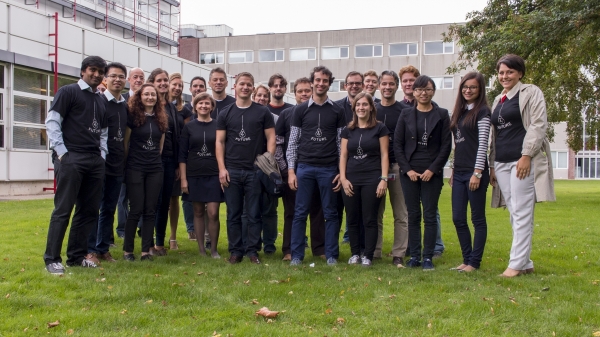Catalysts are substances capable of altering the mechanism of a chemical reaction without actually taking part in it. They can make it faster, and more selective, or even favour the reaction being carried out under optimal pressure and temperature conditions. Some of them are activated and execute their function through contact with sunlight, as opposed to other sources of energy that are more expensive and harmful to the environment.
Expanding the use of these cleaner compounds, called photocatalysts, is the main objective of the Photo4Future research project, an international effort on which the FQM-383 research group at the University of Córdoba is working, seeking to develop greener and more sustainable chemicals from the environmental point of view.
One of the results of the project, which has been the focus of several pieces in influential scientific journals, has been the development of a catalyst that is activated by sunlight and that is synthesised using processed wheat residues (bran), a product resulting from the milling of cereal grains to obtain flour. As reported by the researcher responsible for the study at the University of Córdoba, Rafael Luque, wheat waste, donated by a North American company dedicated to cereal refining, was used to produce materials based on titanium dioxide.
Titanium dioxide (TiO2) is one of the most common photocatalysts, and used in photochemistry because it is a cheap, abundant, robust compound with a relatively low toxicity. It also features a great capacity to dissolve in organic solutions. Thanks to this new study, in which a mechanochemical-type synthetic process was used, through a milling process they managed for the catalyst to be activated by means of visible light. Normally, this compound is activated in the presence of ultraviolet light, a wavelength imperceptible to the human eye, as it lies above the visible spectrum. Thus, to trigger it in this way a special type of expensive lamp requiring a large amount of energy is usually needed.
Being able to activate this catalyst, widely used in chemical reactions, by means of solar light could, therefore, entail significant economic and energy savings for the industry, especially in places in Southern Europe that enjoy many hours of sunshine. There is also the possibility of synthesising it using wheat waste, which until now had no added value, but that has now become a raw material for the synthesis of efficient photocatalytic materials.
The designing of catalysts based on plant residues, and the improvement of the applicability of transformations that exploit the sun's energy, remains a research priority in the field of Chemistry. Therefore, the research group will continue working along this line to be able to make use of this wheat waste in other types of materials. The massive use of these techniques, on an industrial scale, could make possible a leap forward towards truly eco-friendly chemistry.


